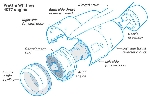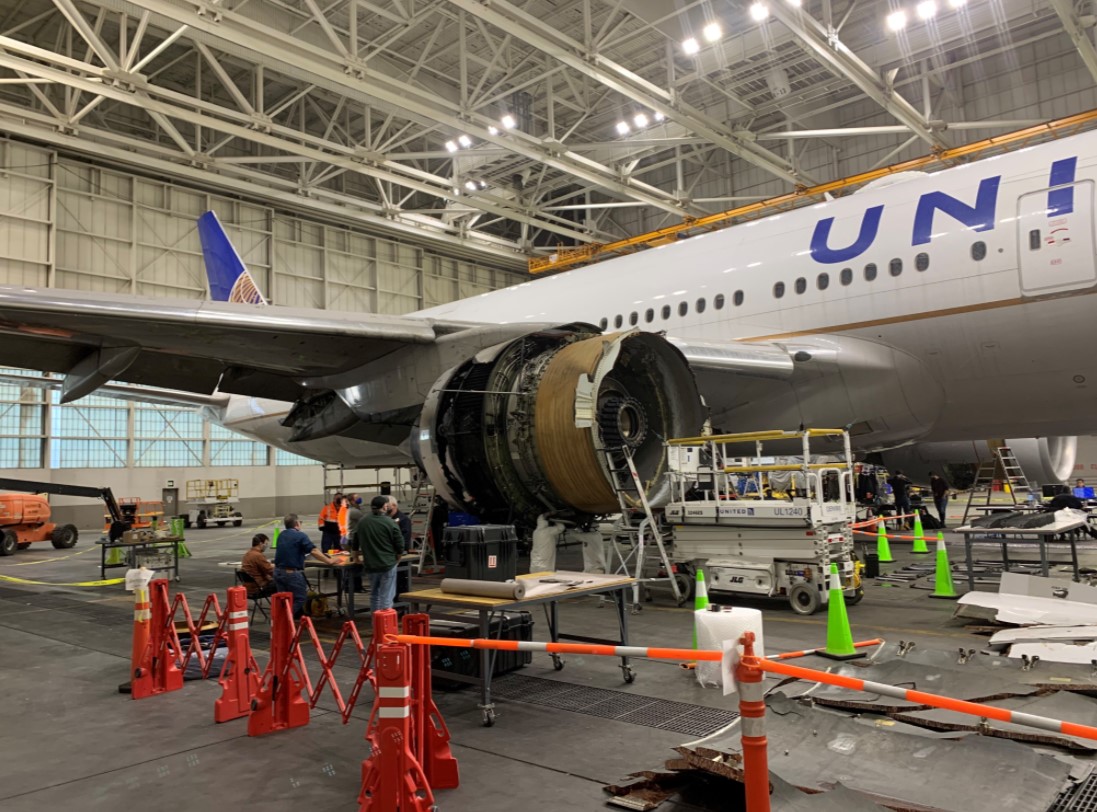I am still puzzling over the source of the fire, since the fuel pumps were shut down.
Normally, the oil is cooled at the heat exchanger by the extremely cold fuel and this heat exchanger sits on the engine (core) casing right behind the fan case with its associated plumbing.
Just a theory, but I'm thinking when the flan blade debris let loose this debris cut the oil lines, which subsequently flowed oil on the hot rear case igniting the oil.
I'm puzzled by the persistent fire as well.
In general, during a severe damage/fire/failure shut down of an engine, the crew pulls the fire handle for that engine.
The fire handle does the following:
1. shuts off fuel at both the fuel control shut off valve and the spar valve (in the pylon that holds the engine to the wing)
2. shuts off hydraulic fluid
3. shuts off bleed air from the engine
4. shuts off generator electric (field) supply
5. arms fire bottles to that nacelle.
So, I see several possibilities for the persistent fire:
1. The fire handle was not pulled*, since the engine was still making power (I consider this unlikely, but we don't yet know)
2. A spar valve did not completely close, so fuel was still going to the engine
3. The fire was from the 20-25 quarts of oil left in the engine as it continued to turn, and the oil pumps continued to operate.
Of the fire possibilities, I'm on the oil side of the thinking.
By the way, the oil cooler is more of a fuel warmer than just oil cooler. In very cold conditions, the fuel gets close to gel temperature, and warming it up dissolves any paraffin so that the engine keeps running and the filter and/or fuel control don't get clogged up.
*We have been slowly changing how we assess engine damage and our response to damage as a result of evidence and analysis that showed that 80+% of the engines that we shut down (and pulled the fire handle) were actually capable of producing thrust. So, where we were once very aggressive in just shutting down an engine with malfunctions, like a compressor stall, and pulling the fire handle, we are now more thoughtful about the assessment.
The assessment includes the following: rotation, vibration, and fire (the verbiage in the flight manual is paragraphs long, but I like to keep things simple when teaching or discussing them). So, if the engine is still rotating, and there is no excessive vibration or fire, we are encouraged to try a restart and operate the engine.
Compressor stall (I've had perhaps a hundred in my previous career, and zero in 23 years of airline flying) may clear at reduced thrust, or it may take a shut down to achieve balance between N1 and N2 rotors (N3 in the case of the RB-211 on the 757) and allow normal operation. We, as an industry, had shut down a lot of compressor stalls, pulled the handle, and left those engines off.
Well, when it's 3 hours to Hawaii on one engine, pulling the handle on an engine that was actually able, even likely, to run correctly once restarted becomes a less than optimum decision.
So, while it's too early to know, I am really looking forward to the report on this from a crew perspective - what were the cockpit indications? The Captain is a Line Check Airman - an instructor in the airplane, so his thinking should reflect the latest evolution in our approach.
What did they see?
What did they decide?


